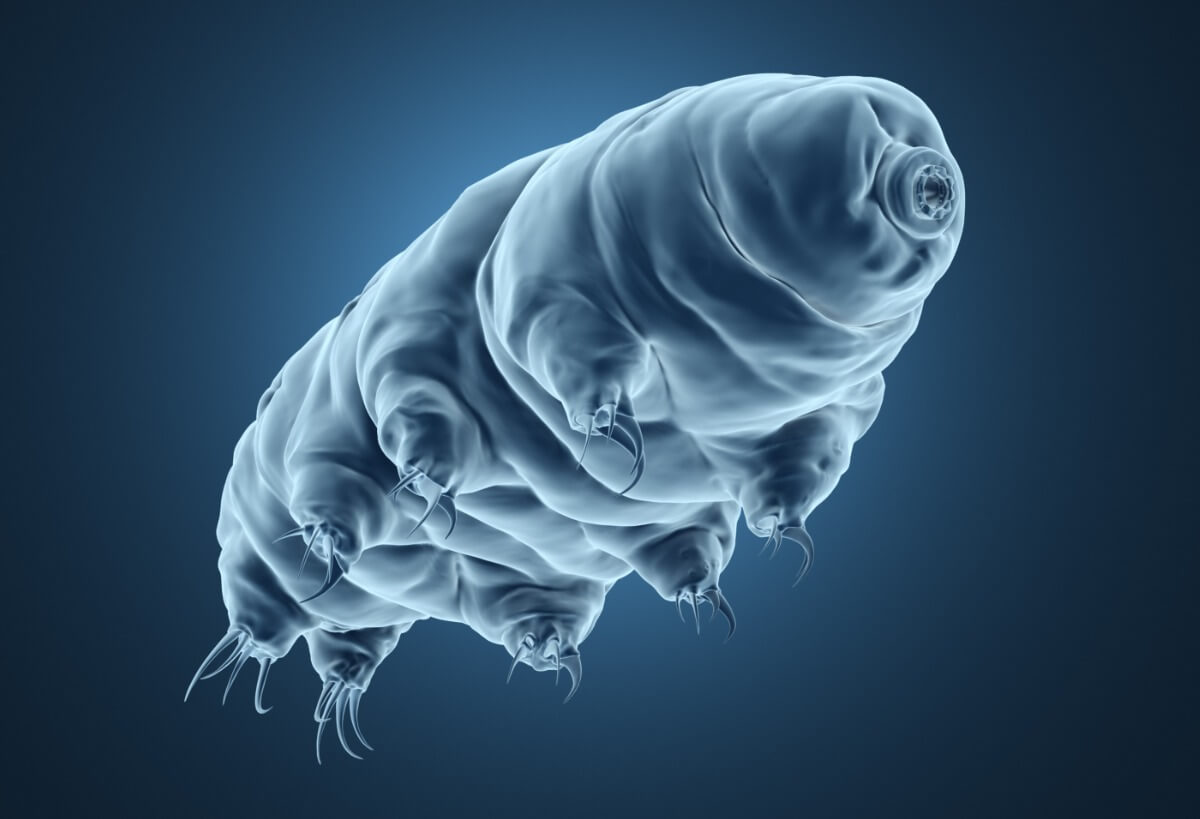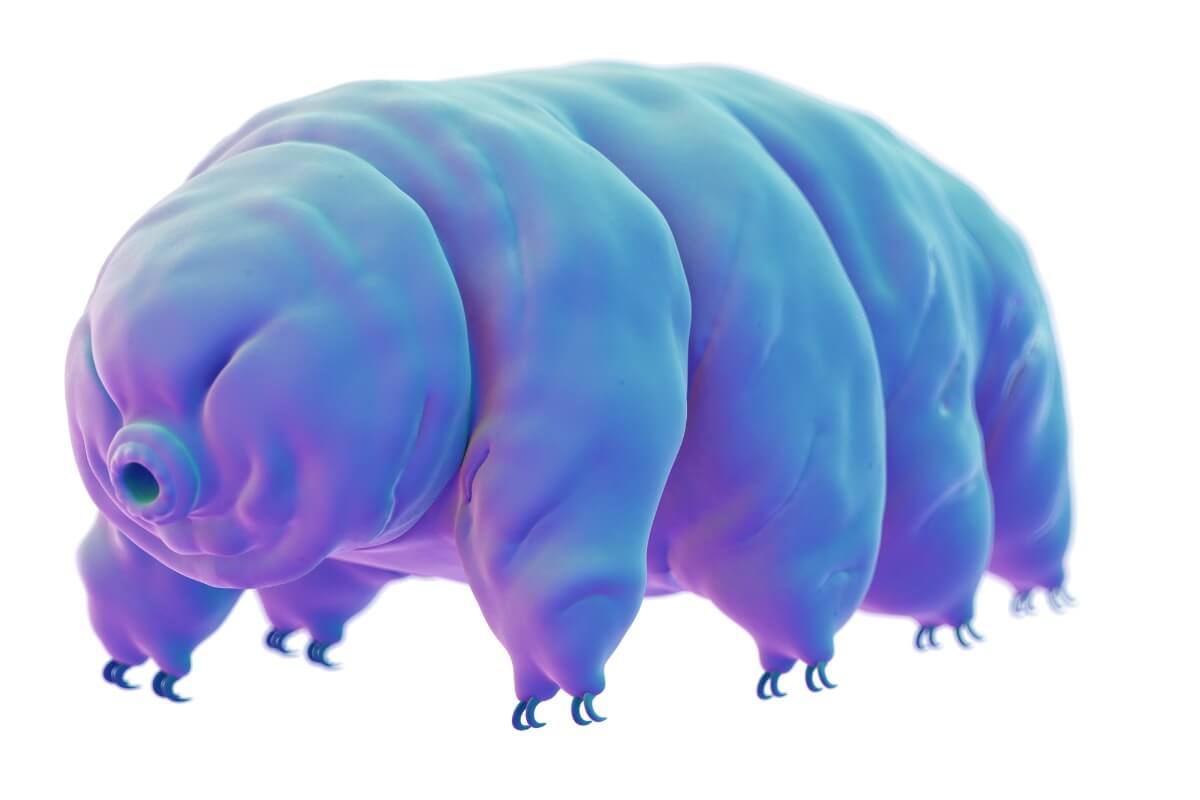Tardigrades, the Toughest Animals in the World


Written and verified by the biologist Francisco Morata Carramolino
Tardigrades, also called ‘water bears’ or ‘moss pigs’, are surprising animals in every possible way. For one thing, they’re extremely abundant and ubiquitous, having been found from the Arctic to the depths of the oceans – and even in rainforests.
Furthermore, these invertebrates are minuscule and have an extraordinary structural complexity that characterizes them. Adults are barely half a millimeter long, but they have several pairs of legs, which they use to walk through their microscopic world. This means that, despite being so frequent, they go unnoticed.
Lastly, these are such hardy animals that it’s hard to believe. These tiny creatures are unfazed by conditions that would kill the vast majority of life on the planet, as they can even survive the vacuum of outer space. If you want to learn more about these almost indestructible invertebrates, read on.
Tardigrade characteristics
Tardigrades make up their own phylum of animals, one of the broadest classifications within this kingdom. Broadly speaking, this means that they’re a very different group, which separated from the rest a long time ago and, therefore, has unique characteristics. Even so, they’re related to arthropods, so they’re somewhat reminiscent of them.
The plump body of these invertebrates is divided into 5 visible segments. The first one contains the head. The other 4 have one pair of legs per segment: these are short, thick and finished in claws, which vary according to the species.
The last pair of legs emerges from the end of the animal, behind the cloaca, in a peculiar way not seen in other living beings.
The head may contain a pair of eyes, in addition to the tube-like mouth structure, which these invertebrates use for food. Inside, the body of tardigrades is very similar to that of other animals: it contains a digestive system with esophagus, stomach and other common parts, as well as a nervous system with a brain.
On the other hand, the exterior is covered with a hard and flexible cuticle, which protects these animals from harmful elements. This shell must be shed as the tardigrade grows.
In addition, the cuticle serves to differentiate between the 2 large groups of water bears. Eutardigrades have a smooth cuticle, which gives them a rounded appearance, while heterotardigrades have plates on the cuticle reminiscent of armor.
When they’re born, these animals can measure as little as 0.05 millimeters. The adults of most species tend to grow up to 0.5 millimeters, although some species reach up to 1.5 millimeters. If you look very closely, some of them can be seen without microscopes.

Where do tardigrades live?
Tardigrades are everywhere. They’ve been found in intertidal zones, deep in the oceans, in the Arctic, and even in the treetops of forested areas.
The more than 1000 species of tardigrades described so far can be divided into 3 groups, depending on their ecology. Some are marine, others are freshwater, but the vast majority of known species are ‘terrestrial’.
In reality, these latter type live in small accumulations of water that are stored in terrestrial environments, especially in lichens, mosses, or similar vegetation.
These habitats are surprisingly extreme, as they provide these animals with very little protection. Also, to complicate matters further, tardigrades are exposed to prolonged periods of direct solar radiation. This can cause the body of water where they live to dry out in a very short time.
The adaptations that allow these animals to survive the harshest conditions imaginable have emerged precisely as an evolutionary response to life in these harsh and changing ecosystems. Marine and freshwater tardigrades live in much more stable environments, so they don’t display the incredible abilities of terrestrial ones.
The toughest animals on the planet
Tardigrades are capable of going through a process called cryptobiosis, through which they transform into a resistance structure, called ‘tun’. To do this, they lose more than 90% of the water in their body, reduce their size to a third of the original size and stop their metabolism.
Although this form of resistance arose to survive temporary dryness or irradiation from lichens and mosses, it’s effective against almost any unfavorable circumstance imaginable.
In the form of ‘tun’, tardigrades have been shown to be able to survive a great many exogenous stressors. Among them, we can highlight the following:
- 20 hours at -272.95 degrees Celsius: This is close to absolute zero, the lowest temperature that can be reached.
- 20 months at -200 degrees Celsius.
- High temperatures, up to 150 degrees Celsius.
- 6000 atmospheres of pressure.
- High concentrations of toxic gases, such as carbon monoxide, carbon dioxide, sulfur dioxide and nitrogen.
- 30 years without food or water.
- The vacuum of space and direct ionizing radiation.
After being exposed to these extremes and recovering optimal conditions, tardigrades return to their active state in a matter of hours or minutes. When the environment allows it, they’ll go on with their lives as if nothing had happened.

Ultimately, these small invertebrates are the supreme survivors. Their incredible abilities are allowing researchers to discover more about the limits of life, as well as some of the secrets of biology, physics and chemistry that determine them.
All cited sources were thoroughly reviewed by our team to ensure their quality, reliability, currency, and validity. The bibliography of this article was considered reliable and of academic or scientific accuracy.
- https://www.americanscientist.org/article/tardigrades
- https://www.nationalgeographic.com/animals/invertebrates/facts/tardigrades-water-bears
- http://www.bbc.com/earth/story/20150313-the-toughest-animals-on-earth
- Horikawa, D. D., Sakashita, T., Katagiri, C., Watanabe, M., Kikawada, T., Nakahara, Y., … & Kuwabara, M. (2006). Radiation tolerance in the tardigrade Milnesium tardigradum. International journal of radiation biology, 82(12), 843-848.
- Nelson, D. R., Guidetti, R., & Rebecchi, L. (2015). Phylum tardigrada. In Thorp and Covich’s freshwater invertebrates (pp. 347-380). Academic Press.
This text is provided for informational purposes only and does not replace consultation with a professional. If in doubt, consult your specialist.